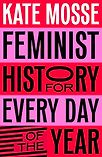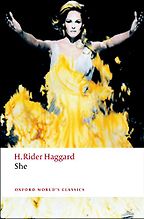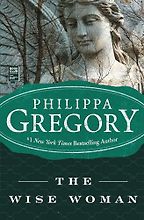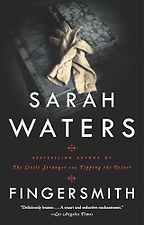Thank you for recommending five historical novels with strong female leads. What do you look for in fiction?
I look for an incredible story. I want things to happen, I want there to be a sense of beginning, middle, and end, a status quo that is challenged. And I look for resolution—I don’t look for books that leave things open and hanging—in other words, giving readers the ending they would not always get in real life. I also crave strong, purposeful characters with agency —female, male, everybody. But I suppose, at the heart of everything for me, is place; books that have a strong sense of where they are set, so you can smell the earth, imagine the feel of soil beneath your nails, say, the texture of lived life.
That comes through in your own writing. You’ve just released the paperback of The Map of Bones, which tells the story of two South African women—a Huguenot refugee in the 17th century and her 19th-century descendant.
The Map of Bones is the fourth in the Hubert Family Chronicles, although you don’t have to have read the other three to read this novel. It’s a feminist adventure story that does three things: first, it talks about women’s place in the world in the 17th and 19th centuries; it also puts on to the page the early decades of the country we now know as South Africa; finally, it talks about what it means to be a refugee and the possibility of creating a new life in another part of the world.
The Huguenots were forced from their homeland in France, a diaspora that saw them welcomed to many countries in the world, England included. But my band of Huguenots are the small number that found their way to the Cape of Good Hope in the 1680s.
But the beating heart of the book is how easily women’s stories and experiences are lost to history, or neglected or erased, and therefore the importance of women writing other women’s stories to make sure that we too are present—honestly and truthfully—in the history books.
It’s an adventure story, and a detective story. It has a strong sense of place: the development of the Cape Colony, the terrible consequences of that colonisation by the Dutch, and the later British involvement. It was a wonderful novel to write and research, as you can imagine. I went to Stellenbosch and Franschhoek many times while I was writing.
That’s an interesting point. Female stories tend to vanish from the records. Do you think historical fiction has a role to play in bringing these stories forward where recorded history might be lacking?
Your phrase is exactly right. ‘Recorded history.’ The issue has always been not that women weren’t there—women were always there, making just as significant a contribution—but the writing of history, particularly in the Modern period, quite actively left women out.
There has always been an understanding, a tradition if you like, that if you couldn’t verify something from history through the archive—if there wasn’t documented evidence of one kind or another—then you couldn’t include it. But that overlooks the fact that there was a deliberate lack of preservation of women’s stories or evidence of women’s achievements, and indeed Black and brown stories, and working-class stories, and stories of people from different religious backgrounds.
So many people’s lives are not reflected in the archives because the evidence was not kept, not because it didn’t exist. Many of the people that I’ve written about in my non-fiction books—I have a book for young adults coming out in September called Feminist History for Every Day of the Year—were famous in their day, but their legacy was not protected.
This is where historical fiction can be so powerful. You might not have every piece of evidence about a woman’s life, but common sense tells you what probably happened. That is why, I think, historical fiction is so popular.
Let’s talk about the novels that you’ve recommended. Albeit, we are starting with a novel with a somewhat fantastical premise—She: A History of Adventure by H. Rider Haggard. It’s also set in Africa, but features…would you call it an uncontacted African kingdom?
These five books are not necessarily my ‘favourites,’ but historical novels that have had an influence on me and my writing. She was a novel that was so incredibly powerful and popular in its day. It was first published in book form in 1887, having been serialised the year before, and it sold something in the region of 80 million copies. It’s never been out of print.
It’s a first-person narrative that follows the story of a Victorian man called Horace Holly and his ward, Leo Vincey. This novel was one of the first of what became known as the ‘lost kingdom’ genre. In many ways, it’s the beginning of what we now think of as fantasy fiction: creating an entire world that carries on outside of the real world.
Of course, it came out of a very particular time in history: British imperialism and colonisation, British pride in ‘The Empire’. But, beneath the surface, there are themes of anxiety about a world that is changing, the rise of the new woman, and the fears of that within traditional Victorian society. Women wanted the vote and wanted education and wanted to be powerful.
There are, of course, many issues about reading a book written in 1887 by somebody who believed absolutely in the ‘civilising power of imperialism.’ But it is a superb adventure story. Rider Haggard’s sense of place is incredible—he served for many years in the Cape and knew He knew the land very well—and had quite a lot of contempt, really, for many of the white colonialists and a great deal of respect for the Zulu nation.
It’s a story of a woman leader. The queen of this kingdom and of the lost city of Kôr is Aisha, ‘She-who-must-be-obeyed.’ Aisha is two thousand years old, and is kept alive by the Pillar of Fire, a fire of life that has kept her alive as she waits for her murdered love to come back to her. So it’s about rebirth and everlasting life, a very different kind of Grail story.
“So many people’s lives are not reflected in the archives because the evidence was not kept, not because it didn’t exist”
When I was growing up in the 1960s and 1970s, the phrase ‘She-who-must-be-obeyed’ was in common usage. My father loved the book, and when I was older I understood that, yes, it was because my father—against his upbringing in many ways, and the views of the time—believed absolutely in women and men as equals. He, like millions of readers, loved the idea of this powerful woman who was in charge.
For me, it is an extraordinary piece of fantasy fiction, lost world fiction, and it shows how to make place a central ‘character’ in a book.
Another person who has written about royal women is Philippa Gregory, the author of the second book you’ve chosen to recommend. She’s perhaps most famous for The Other Boleyn Girl, but you’ve selected The Wise Woman, about a young girl who joins a nunnery in 1540.
This was Philippa Gregory’s debut. I’m a huge fan of the enormous variety of Philippa’s writing. With all my fiction and nonfiction, my interest is putting ordinary women back into history. So court stories appeal less, because they are the women we know, and most of us are not those women.
The Wise Woman brings the ordinary world of the Tudor period to life, away from the finest houses and the court. And it’s a story, a feminist parable really, about a woman struggling to protect herself and to find a way to live without terrible consequences in a pitiless world. She is subject to ‘big history.’ Most of us, whatever we feel, have little power in the face of the big history going on around us.
It is a mystery to me as to why Henry VIII—a serial adulterer, an abuser, a bully, a wrecker—has become this iconic figure. He was a 16th century Trumpian figure, it’s quite extraordinary. But this story is about an ordinary girl who understands that being in a nunnery will keep her safer than being a lone woman out in the world. And so it does, until the Dissolution of the Monasteries, when everyone is evicted and she loses her sanctuary. Then she uses her powers—a form of magic—to achieve a way of living in the world. But this puts her in danger, because of course she is seen as a heretic. It is a gripping read.
I wonder whether historical novels featuring female protagonists with magical powers are seeking to create a sense of agency that would otherwise be lacking. How do you think about that?
Well, I think a lot of the time what is being presented as, or what would have been thought of as magic, is simply knowledge that is not part of the proscribed text. Women’s knowledge as opposed to the knowledge of the church. A century later we would be in the time of mass murdering of women under the guise of witchcraft trials.
This was a time where women were not allowed to be doctors—the Royal College of Surgeons talked of women as ‘mentally feeble’. But we know that women had been healers; once it became a profession, women weren’t allowed to do it.
I think, yes, there is an idea, possibly, that magic gives women a power that they lacked in the real world. But when you actually look into these powers, a lot of them are just gifts and skills that, nowadays, would be categorised as scientific invention. Some people have an intuition and knowledge that leads them down a particular track, and others do not.
Yet again it comes back to that idea of women’s lives not being recorded, and when it is, it’s always the story of the one extraordinary woman who essentially was different from all other women. That’s the other important thing about putting women back into history: not to fall into that trap. Behind that one extraordinary woman, there will always be many others doing much the same thing but not being acknowledged.
That’s why I love the lead character in The Wise Woman, because she is both exceptional and also an ordinary woman trying to find a way to survive in a world that is very harsh to women.
That’s a useful way of thinking about it. Perhaps we could talk next about Toni Morrison’s The Bluest Eye, which moves us to 20th-century Ohio.
Well, this is another debut, first published in 1971. If you’re trying to talk to somebody who has not really thought about what racism is, this book explains it. It is the story of a young, very, very disadvantaged black girl in rural Ohio in the years following the Great Depression. She has no power, a horrible life, is abused, and voiceless. Pecola looks at another little girl who is the daughter of her foster parents, a child with white skin and blue eyes, and in her child’s mind she thinks: If I only had blue eyes, people would be nice to me. She doesn’t see it as white people having one life and Black people having no rights or agency. She sees it as a very simple thing: If only I had differently coloured eyes, I’d be okay.
It’s an incredibly painful novel to read. It’s about dislocation, it’s about tragedy. It’s about the impossibility of certain people being able to lift themselves out of the position they’re in, because they genuinely have no power.
When I re-read the novel, it becomes richer every time as my knowledge of the world and sophistication in thinking has grown. It’s very hard to have a novel with a lead character who is not powerful, but the quietness and lack of voice is actually what fills the novel itself.
Toni Morrison was a genius, and would go on to write other novels that were much more famous and celebrated, not least of all, Beloved. But I would say that this novel goes to the heart of what it means to be treated differently, treated unjustly.
I’m interested in this idea you’ve touched on twice, about how life can simply happen to people—how we are all buffeted around by larger historical forces. But it must be a difficult thing for a fiction writer to portray.
Yes, absolutely. Another issue with writing women back into history is that there is a pressure to only include the women that you approve of or agree with. But if we want a 360º history that tells the story of everybody, then we must put back the women we don’t agree with, those who did awful things as well as those we admire, the sinners as well as the saints. It’s also important to understand that some women did extraordinary, significant things, who also had appalling views on different matters.
The world is complicated, nuanced, and we must acknowledge that. People contain contradictions.
Let’s turn to Sarah Waters’ Fingersmith. It’s a historical crime novel set during the Victorian era.
This is a tour de force. It came out in 2002, and was her third novel. Her first, Tipping the Velvet, is rumbunctious and great fun. Her second, Affinity, is beautiful and complicated. But Fingersmith is an astonishing piece of work.
The lead character, Sue Trinder, is an orphan. She’s brought up a “Fagin-like den of thieves” by this terrible adopted mother, Mrs Sucksby. Sue’s job is to go with a man known as ‘Gentleman’ and together to convince a wealthy heiress, Maud Lily, to elope with and marry this man. The plan is he will have control of her fortune and consign her to an asylum for the insane.
That’s the premise. You’re completely in it, and you’re worried about Maud, you want to save her, and you can’t believe Sue would be conspiring in such a terrible scheme, although she has nothing. She’s like the Artful Dodger in female form. Then the most incredible twist—when they get to the asylum and it’s Sue who is taken. Because the real plot is between Maud and XX Gentleman. The novel is divided into three parts. The second part is Maud’s story, in which essentially she was given as a child to a revolting man who makes her catalogue a library of pornography. It’s very a very unpleasant, sub-respectable Victorian society story.
So you get Maud’s backstory, why she might have engaged in such a plot. The third section return to Sue’s point of view and then a very satisfying, though not sentimental, resolution.
Sarah Waters creates a fabulous sense of place, the violence of those Victorian institutions, the impossibility of a women ever getting out again if she was confined. It’s a novel that requires a lot of its reader—who is tricking who, who is the most morally bankrupt. What is wonderful is how one’s sympathies go backwards and forwards between Sue and Maud. They hate each other, then they find each other again, they fall in love properly, and you believe in the possibility of a happy ending.
It’s an extraordinary novel. I don’t think any modern writer does the underbelly of the Victorian period better than Sarah Waters. The only sadness with adoring her work is that she takes a very long time to write novels. Fingers crossed there will be a new one in 2026!
That’s something to look forward to. I think that brings us to your final book recommendation, The Little House on the Prairie series by Laura Ingalls Wilder (1867-1957). Why do you recommend it?
First and foremost place and the fact that these are pioneer novels. This series brings to life the Midwest of the 1870s, 1880s, 1890s America: Wisconsin, Kansas, Minnesota, South Dakota, Missouri. These were the places where the real author, Laura Ingalls Wilder, lived. Of course, when you read them as an older person, you realise that the attitudes—particularly to First Nation Americans—are terrible. Because although these pioneers were courageous and extraordinary in their own way, they were taking somebody else’s land.
The reason I loved these books so much when I first read them was that it was a family where the two parents loved each other. I think people forget how rare seeing a positive marriage with children is in fiction. The father and the mother still love each other and they are good people.
Their oldest daughters are Laura and Mary, then there is baby Carrie, and later in the series, Grace comes along. It’s all about the hardness of day-to-day life, much as I tried to create in The Map of Bones and my Huguenot pioneers. It’s about life lived in this huge landscape. It’s about that tension between girls and boys and what is expected, and the role of the church and religion.
Much like in that other American classic, Little Women, it presents different kinds of girlhood. When I was growing up, we all wanted to be George in Blyton’s The Famous Five, and Jo in Little Women because they were not passive or quiet, they had character. Like that, we all wanted to be Laura, because she is an explorer, she’s curious, she doesn’t care if she looks pretty or has bows in her hair. May does that. Laura has a sense of being the ordinary child.
There’s a wonderful poem by Philip Larkin on the birth of one of Kingley Amis’s daughters, Sally. It’s about, essentially, wishing that she will be ordinary—so she’ll be able to live a happy life as herself.
Have, like other women,
An average of talents:
Not ugly, not good-looking,
Nothing uncustomary
To pull you off your balance,
I think this is what is at the heart of the appeal of Laura Ingalls Wilder. I just loved these books. I would sit and read them in my garden in Sussex, imagining myself out on the plains and the prairies. It’s the same landscape I later rediscovered in Willa Cather, the great American writer of the turn of the century, who wrote about tough women who just got on with their lives.
Of course, in The Map of Bones, those Huguenot women are the same types of women. No fuss, no self pity. They have the guns, get the water from the well, drive the carriages. They were extraordinary.
You’ve done a lot to highlight the stories of women, not least in your own historical fiction. You are founder director of The Women’s Prize for Fiction and now for Non-Fiction. You’ve written history books for women, as you mentioned earlier. Was it always obvious to you that you should foreground female stories and characters?
I think it’s more that, given I’m a women, why wouldn’t I be writing about women? It doesn’t seem odd to me that I would do that.
The way I write is that I have a strong sense of the sort of story I’m going to tell. It’s always a triangle between place, history, and character. But, for me, place comes first. I don’t decide that I’m going to have this woman or that person. I start writing and see who turns up. And, in every case bar one, a woman has turned up. In The Winter Ghosts, a male protagonist—Freddie—turned up.
But I write plenty of male characters, supporting leads if you like. Citadel, in particular—although the lead character is female, Sandrine—is really a novel about two people. The whole Joubert Family Chronicles begins with a Hugenot boy and a Catholic girl falling in love. For me, I think it’s simply that I always loved history but realised that women’s stories were not there. Even now, I fear only about 5% of the history syllabus in schools involves women as principal characters. This is just wrong. And inaccurate …
When I was setting up the Women’s Prize for Fiction back in the early 1990s, I explained to my amazing parents why we were doing it. My Dad thought a while, then said: ‘I understand, darling. It’s about getting a bigger table and more chairs.’ That’s the point. It’s not about taking men out. It’s about adding the women, girls, and everybody back where they belong and where they always were. Fiction or non-fiction, that’s what matters to me: telling the whole story.
Kate Mosse’s The Map of Bones is out now. Feminist History for Every Day of the Year publishes 18 September
Interview by Cal Flyn, Deputy Editor
September 5, 2025
Five Books aims to keep its book recommendations and interviews up to date. If you are the interviewee and would like to update your choice of books (or even just what you say about them) please email us at [email protected]
Five Books interviews are expensive to produce. If you've enjoyed this interview, please support us by donating a small amount.












